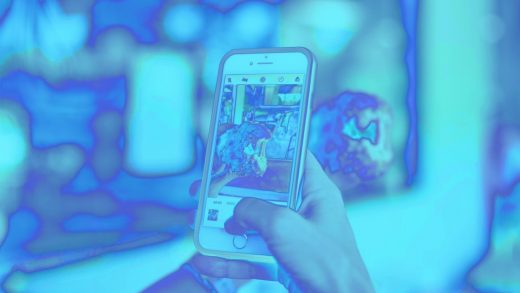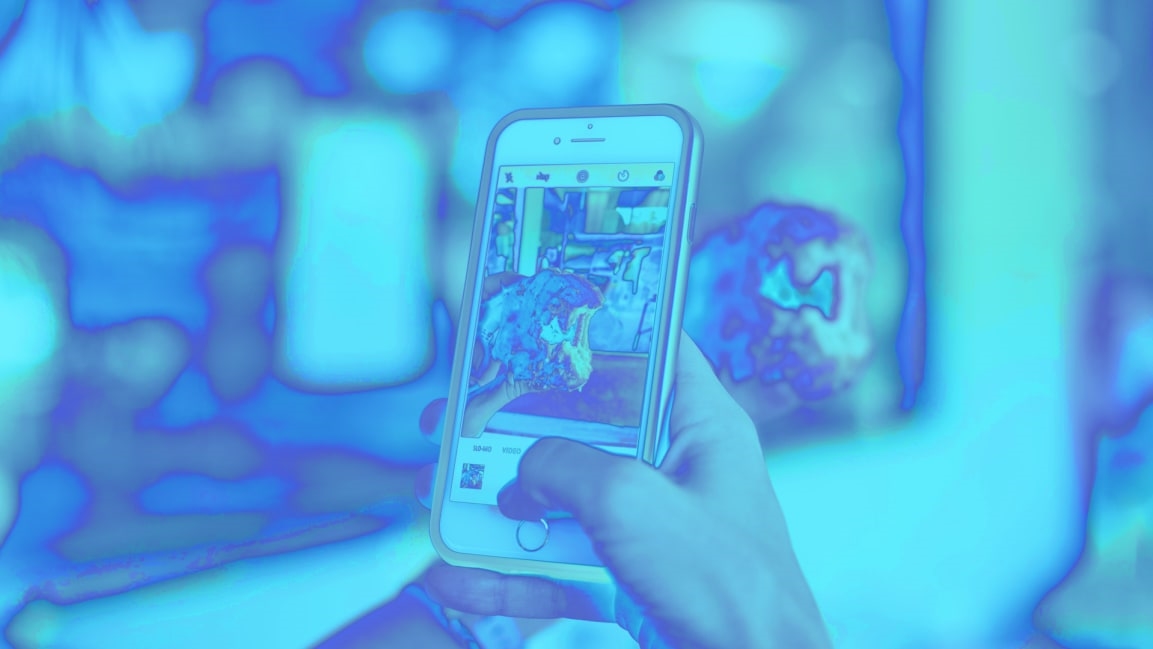What if Facebook had never bought Instagram and WhatsApp?
Last Tuesday, the Federal Trade Commission, 46 states, the District of Columbia, and Guam filed lawsuits asserting that Facebook is an illegal monopoly—and seeking the forced divestiture of Instagram and WhatsApp. If successful, the suits would undo the acquisitions that played pivotal roles in Facebook’s dominance of social media and messaging over the past decade.
It might be years before it’s clear what all this means for the company—and even after it seems to be clear, it might not be. After all, the closest parallel in recent memory is the Department of Justice’s 1990s antitrust suit against Microsoft, which was spawned by that company’s bundling of its Internet Explorer browser with Windows. Judge Thomas Penfield Jackson ordered Microsoft to be split into two companies: one to make operating systems and one to make apps such as Office. That would have changed software history. But Jackson’s decree was overturned. Eventually, Microsoft agreed to a settlement that put restrictions on its business practices that no consumer would have noticed.
Like Microsoft, Facebook may evade being dismantled. Still, just considering the idea of Instagram and WhatsApp being spun out raises intriguing what-if scenarios. And it led me to wonder: How different would the tech industry be if Facebook hadn’t bought them in the first place—whether because the FTC didn’t allow it, someone else struck a deal first, or their founders simply chose to remain independent?
Would Instagram, which had 30 million users at the time of the acquisition, have kept on growing? Would it have turned into Godzilla to Facebook’s King Kong, or a smaller success akin to Twitter or Snapchat? How about WhatsApp? Could either of these two startups, like MySpace, have become a byword for a phenom that blew it?
Herewith, some speculation on what could have been:
Instagram might well have boomed regardless
In its response to the suit, Facebook points out that most of Instagram’s growth and evolution happened post-acquisition:
The Instagram you see today is the Instagram that Facebook built, not the app it acquired. When Facebook bought Instagram, it had about 2% of the users it has today, just 13 employees, no revenue and virtually no infrastructure of its own.
This is true. And Facebook did pull off a rare feat in Silicon Valley: It bought something popular and made it even more popular. Had it botched the acquisition, it wouldn’t be under fire now for owning Instagram, and spinning it back out wouldn’t make the market more competitive.
But Facebook succeeded with Instagram in part by leaving its cofounders, Kevin Systrom and Mike Krieger, in charge. Until they quit in 2018—reportedly because the free rein they’d enjoyed had been increasingly curtailed—the duo shaped the experience that just kept attracting more users. In 2017, Systrom told me that Instagram had the autonomy to pursue its own vision, with Facebook CEO Mark Zuckerberg and COO Sheryl Sandberg’s roles being like that of board members.
Having Facebook-scale resources unquestionably helped Instagram grow as big and as fast as it did. Still, it’s easy to imagine Systrom and Krieger turning a stand-alone Instagram into something massive and enduringly popular. News stories and deep dives such as Sarah Frier’s No Filter: The Inside Story of Instagram and Steven Levy’s Facebook: The Inside Story, show that Zuckerberg visualized exactly that—which is why he made sure that Instagram was a part of Facebook’s portfolio, not a rival.
. . . but it might not have been a money machine
For a time after the acquisition, Instagram didn’t seem in a rush to monetize itself through advertising. But once it did, it was able to piggyback on top of Facebook’s powerful existing ad platform, giving it an unbeatable shortcut to prosperity. As James Quarles, then the head of Instagram’s business operations, told me in 2017, “When you place an ad, you can say, ‘I’d like this to be on Facebook, Instagram, or both,’ which is very convenient.”
Had Instagram not sold itself to Facebook, it would have needed to come up with its own ad tech, hired its own salespeople, and generally gone through a process more akin to the one that its still-independent competitor Snap had to undertake. It might have worked out quite well. But it’s tough to imagine Instagram being anywhere near as much of a cash machine as it swiftly became as an extension of Facebook.
Facebook might have copied Instagram
When Facebook hasn’t bought a rival, its alternative has often been to copy it. Think back far enough, for example, and you might remember a period when Twitter was ascendant and Facebook started to look like it.
More recently, Instagram has often served as Facebook’s platform for strategic imitation. When Snapchat’s Stories became a hit, Instagram cloned the feature—name and all. Then it cleverly integrated it into the Instagram experience and added enough of its own touches over time to make it wildly popular on its own merits.
More recently, as TikTok commandeered millions of eyeballs, Instagram added a similar feature in Reels. (The jury is still out on that one.)
Meanwhile, over the years the Facebook app itself has added everything from live broadcasting to person-to-person sales to dating. But its overarching personality has remained surprisingly consistent. Had Instagram stayed independent and kept growing, Facebook might have felt itself under much more pressure to make its namesake app more Instagram-esque. In a pre-acquisition email revealed by the suit, Zuckerberg suggested as much, saying that Instagram’s mobile-centric approach would “increasingly be the future of photos.”
WhatsApp would have needed to find a business model
In June 2012, when WhatsApp was still an independent company, cofounders Jan Koum and Brian Acton published a blog post that explained why they didn’t put ads inside their app. Their reasons ran the gamut from the aesthetic intrusion to privacy issues to their feeling that it was a waste of engineering resources better invested in building a great product.
When Facebook agreed to pay $19 billion for WhatsApp less than two years later, reasonable people might have assumed that the app would soon be laden with advertising. Instead, Facebook kept it ad-free. It even ended WhatsApp’s one existing act of monetization (after the first year, you paid 99¢ per year for the service).
Today, advertising on WhatsApp is still a rumor rather than a reality. Facebook has been working on other means of making money from the app’s 2 billion-plus users, such as integrating payments and serving as a customer-service intermediary. But in general, it’s patiently allowed WhatsApp to ride along as a subsidized piece of company that makes plenty of money elsewhere.
Koum and Acton left Facebook in 2018 and 2017, respectively. Like Instagram’s Systrom and Krieger, they were unhappy with Facebook management’s increasingly hands-on involvement in their product. Had they never sold out in the first place, WhatsApp would have needed to become self-sustaining. Whether or not its founders buckled on their opposition to ads, they would have been under far more pressure to monetize eyeballs in ways that went beyond the 99¢ fee.
Other buyers might have messed it all up
Shortly before Facebook acquired Instagram for $1 billion, its cofounders reportedly turned down another suitor: Twitter, which offered a mere $525 million. A couple of years later, when then-Google CEO Larry Page learned of Facebook’s interest in buying WhatsApp, he allegedly tried to swoop in with an even more outrageously gigantic offer.
With all due respect to Twitter and Google, it’s tough to imagine either coulda-been transaction having resulted in the sustained success that Facebook has enjoyed with its two acquisitions. Twitter’s most famous startup purchases are Vine and Periscope—two intriguing products it bought before launch and then failed to turn into lasting hits. As for Google, it’s legendarily bad at messaging, so the odds seem against it having done anywhere near as well with WhatsApp as it did with another purchase, YouTube. Other potential acquirers, such as old-school media or telecommunications companies, might have mismanaged Instagram or WhatsApp into outright irrelevance.
These questions are fun to toss around even though we’ll never know what might have been. The antitrust case against Facebook raises even more hypotheticals. For instance, would Snapchat have been more likely to grow into a Facebook-size success if Facebook hadn’t leveraged Instagram to neutralize it? How many social networking startups never got funding because taking on the Facebook empire seemed futile? If the company had been deprived of the data it has about Instagram and WhatsApp users, would skeptics be any more comfortable with the role it plays in our lives?
We’ll never know for sure—but these and other what-ifs will drive the courtroom battle to come.
(57)



